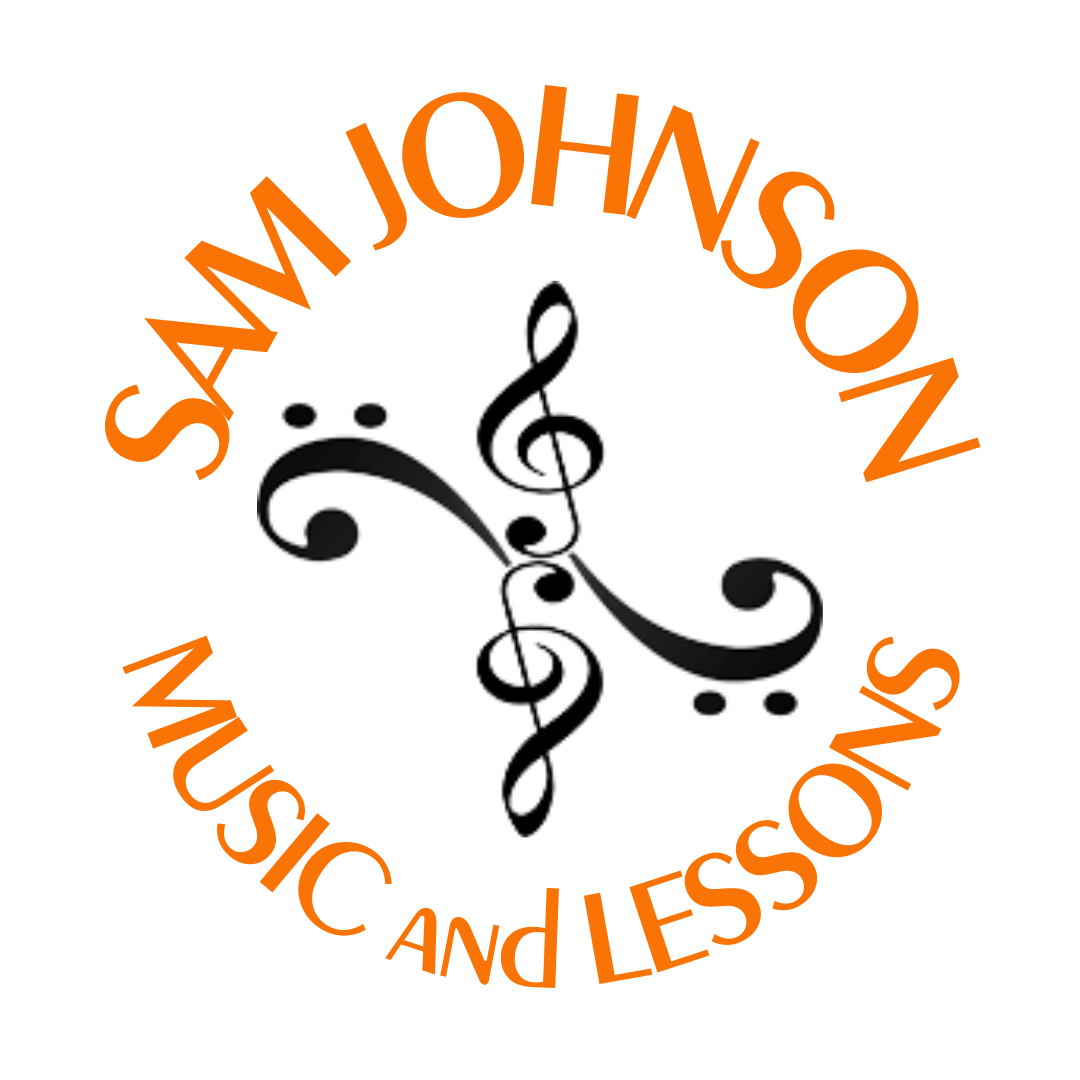Guitar
When practicing it is always advantageous to use a metronome. Although many believe that most people already have a good sense of timing, the metronome will be consistent and push you to be more consistent and accurate in your playing. Always start with a slow tempo, developing your ability to play the part you are working on and then once it is flawless, start to speed up the tempo. 60 bpm would be a good place to start.
Longtones should be always played at slower tempos: 50 - 70 bpm.
Right-Hand Technique
Plucked with Thumb
Beginners may start by using their right thumb to pluck the guitar string. I've found that it is easier to "feel" your way from string to string by using your thumb over a pick. The thumb provides a softer sound which is sometimes preferred in the music.
Plucked with Pick
Eventually, all guitar students should adapt to using a pick to pluck the strings. Mastering the pick will allow you to play much faster passages and gives a more aggressive sound when playing melodies or chords. Always practice using an up and down motion to pluck the string with a pick. make sure you get the same sound from the string in both directions.
Finger Picking
Another technique that is commonly used by guitar players is called "Finger Picking". In this technique, you will use a downward plucking motion with your thumb and an upward plucking motion with your index, middle and ring fingers. Be sure to avoid touching any other string with each finger after the string is plucked. The end result is supposed to be a continued sound, rather than a stopped sound.
Left-Hand Technique
It is important to develop your left hand so that your grip stays very consistent as you move around the neck. This will help you eliminate fret buzz and will improve your muscle memory. I have found there are generally 4 elements to your grip:
Thumb Placement
Play on your Fingertips (bent Knuckles)
Finger spacing
Keep your elbow out
The Thumb should be placed directly behind your middle finger in the center of the back of the neck. You do not need to bend your thumb, keeping it straight will help to keep it relaxed.
ALWAYS play on your Fingertips, keeping your knuckles bent. Your fingers are much stronger if you are using the muscles in your hand by bending your knuckles like you would hold a ball or a bat. If your knuckles are flat, you are no longer using the muscles in your fingers to hold down the string. You also need to make sure you are not touching more than one string so that when you are playing chords, all the strings can vibrate freely. NOTE: You will want to add fingers as you change notes on the same string (in other words, when you place your 4th finger on the string, add or keep the other fingers on the string). And try to keep the fingers hovering over the string that you are playing on when they are not pressing on the string.
The Finger Spacing is fairly easy as you have frets to distinguish where to put your fingers. Make sure that each finger is as close to the fret as possible without impeding the vibration of the string.
It is important to try to keep your wrist as straight as possible. Extreme bending of the wrist will restrict movement and can cause pain in the hand and wrist. A straight and relaxed wrist will allow easier movement and help the player to keep the hand relaxed. Keeping the elbow out will help to keep the wrist straight. You do not have to raise the elbow any higher than just below your shoulder.
I have one exercise which you can vary to work on your left-hand grip:
Play the tones in Ist Position (which starts on the 1st fret), 1 beat for each finger. Start with the E string playing finger 1, 2, 3, 4, then move to the A string and so on. As you move from finger 1 to 2, keep the 1st finger on the string. Do the same when you place the 3rd and 4th finger. Once you have reached the 4th finger on the bottom string, reverse the process. You can also name the notes as you play them. This will help you to memorize the note locations on the bass. (I highly recommend this)
Chords and Strumming
In this video, I explain a concept I call "Target Practice". It is kinda like playing darts with your fingers and the guitar neck. Place your fingers in the position of the chord you are trying to learn. Then lift them off the guitar neck and attempt to land the back exactly where they were. Strum the chord to see if you are correct. Do this over and over again!
Click here for Popup Window Chords
In this series of videos, I explain some simple strumming techniques and demonstrate some exercises that will help you develop a steady rhythm when strumming your guitar. The exercises in the videos are the same as the patterns listed in below. The symbols in this picture show downstroke and upstroke. Exercise one is constant, and the next few have 1 space where you miss the guitar to create a new pattern.
Fretboard Map
Use this map to get to memorize your guitar fretboard. While tab can be a useful tool: The better you know your fretboard, the easier it will be to learn tunes and to communicate with other musicians.







